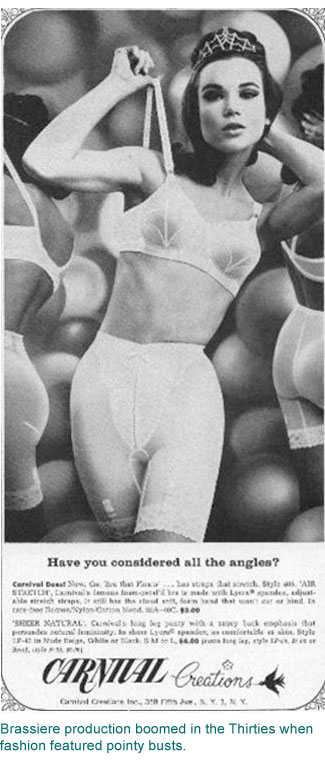
|

Brassieres were an innovation of the Twentieth Century fashion industry. When a New York City seamstress named Ida Rosenthal was inspired in 1922 to create an undergarment that provided separate chambers for women’s breasts, the brassiere was created (Carnival Wholesale Bras was established in the post-war year of 1947 and has since expanded worldwide. The Carnival wholesale bras line has always been a leader in the industry). The concept of distinct cups to physically support and separate breasts revolutionized lingerie design. Brassieres as fashionable undergarments have evolved ever since through times and trends intrinsic to specific eras. For instance, The Roaring Twenties was a decade embracing freedom of conventions and dress. Backless brassieres, cup stitching and under wiring emphasized uplift under Flapper dresses. Rayon, tricot and milanese were new fabrics used in brassiere manufacturing. Brassiere production boomed in the Thirties when fashion featured pointy busts. Use of elastic, adjustable straps and padding were new. Women stopped sewing at home and flocked to department stores, many of whom purchased wholesale bras from Carnival, which provided cup sizing, fitting rooms and trained personnel for custom brassiere measuring. World War II in the 1940s affected bra design too. Military consciousness and terminology were reflected in that era’s Sweater Girls wearing bullet, torpedo and cone cupped bras. The post-war 1950’s was a decade of family and baby boomers; nursing and maternity bras were very popular. Bra ads were common throughout media; bra commercials aired on television. However, the bra-burning, Viet Nam War protestors wreaked some havoc in the brassiere industry of the ’60’s, but plenty of flower children needed the practicality of breast support and many females did not go bra-less. From the 1970’s through the decades into the Twenty-First Century, brassieres have become as flexible as mindsets and trends of fashion history. Ensuing decades continued to design bras affected by need, trend and technology. Today, possibilities in construction, color and fabric seem limitless for the brassiere, a foundation garment which is rich in history yet ripe for future fashion. |